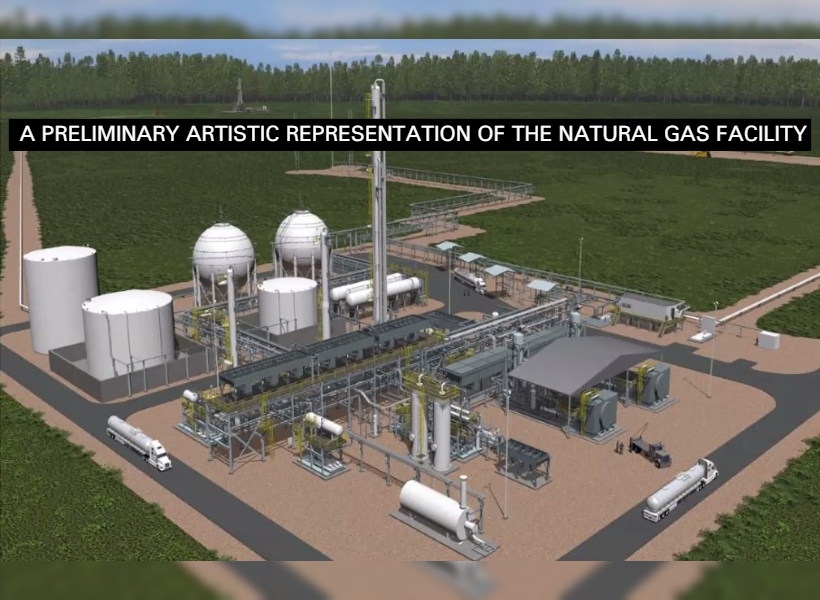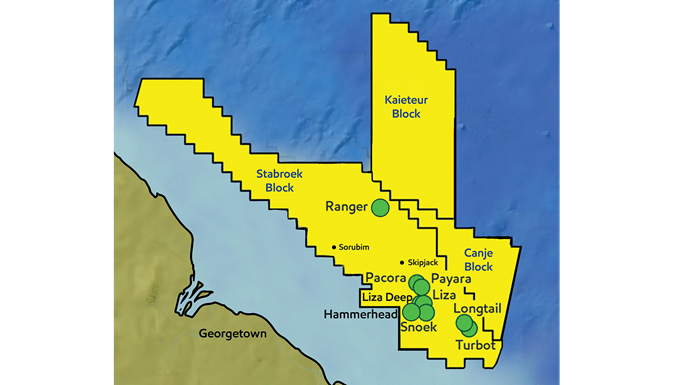The operators of the Stabroek Block — Esso Exploration and Production Guyana Limited (EEPGL), Hess and CNOOC — are moving ahead with plans for the development of a third field called Payara.
The Environmental Protection Agency (EPA) confirmed with the Guyana Standard today that approval for the field is possible late this year.
EEPGL’s parent company, ExxonMobil, noted that the production for the giant field is expected in 2023 and will have the capacity to produce between 180,000 and 220,000 gross barrels of oil per day from a third FPSO.
The company said, “During the early stage of production operations, the FPSO is anticipated to produce up to an average of approximately 5,700,000 to 6,600,000 barrels of crude oil per month. These estimates are preliminary and are subject to change. Processed oil will be stored in tanks in the FPSO hull which has the capacity to hold at least 1.6 million barrels of oil. Approximately every four-six days, the oil will be pumped from the FPSO to a conventional oil tanker which is owned/operated by others. The tanker will then bring the oil to buyers.”
Further to this, Exxon said that the project lifecycle for Payara will include engineering, construction, installation, commissioning, start-up, operations and maintenance, and decommissioning. The engineering phase will include design, Front-End Engineering and Design (FEED), and detailed engineering. The construction phase will include procurement, fabrication and construction, drilling, installation, and hook-up. Operations and maintenance will follow commissioning and start-up and will be the longest phase of the project with a duration of at least 20 years. Startup of the facilities is expected to occur approximately in mid-2023.
The American oil giant said, “Oil production from Payara is expected to last at least 20 years. EEPGL will drill approximately 35 – 45 wells offshore to support extraction of the oil from below the seafloor. Each well will be drilled using a floating drill ship. Each well will be directionally drilled to specific reservoir targets generally 4,000 to 5,500 meters (m) below the sea level. “
At peak, the Guyana Standard understands that EEPGL will utilise approximately 1,200 personnel offshore during the stage where the wells are being drilled and the offshore oil production facilities are being installed. It said that this number will decrease to less than 200 personnel during the production operations phase. This news agency also understands that a smaller number of personnel will be utilized at the onshore support facilities.
At the end of the life of project (at least 20 years), EEPGL would be developing a plan to decommission the offshore production facilities. The plan would then be submitted for approval by the government.











